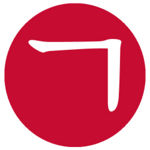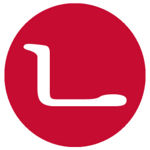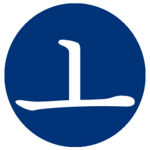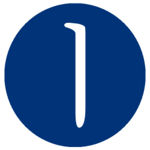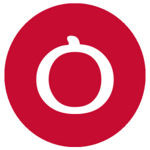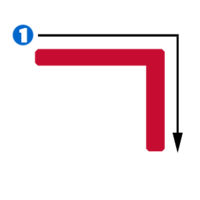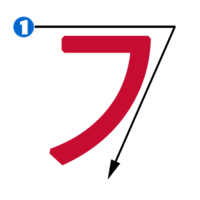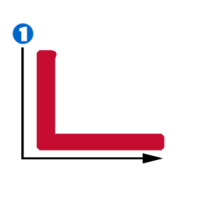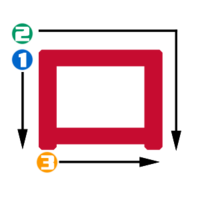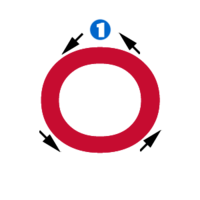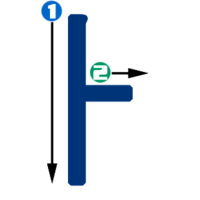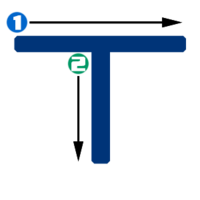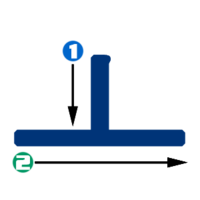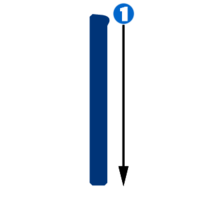Hangeul step 2/zh-hans
|
|
| Help · Cheat Sheet · Community portal |

|

|
Contents
介绍Introduction
Since consonants cannot be pronounced without the help of a vowel, we have decided to teach you the vowel first, then proceed to pair it with a consonant. Note some of these files are set to loop, so you must manually stop the files yourself.
In this lesson, you will learn:
|
| ||||||||||
|
For full information about this letter, see ㅏ.
|
This is pronounced like a mix between a G and a K at the beginning of a word. However, when found between vowels, the sound is voiced and makes a /g/ sound. For full information about this letter, see ㄱ. | ||||||||||
| 练习Practice | |
|---|---|
| 가 | |
|
| ||||||||||
|
This sound makes an "ooh" sound, similar to 'moon' or 'blue' or the U sound in Spanish (i.e. usted in "usted"). For full information about this letter, see ㅜ.
|
This sound is the same as the N sound in English. For full information about this letter, see ㄴ. | ||||||||||
| 练习Practice | |
|---|---|
| 누 | |
| 나 | |
| 구 | |
|
| ||||||||||
|
For full information about this letter, see ㅗ.
|
This sound is the same as the M sound in English. For full information about this letter, see ㅁ. | ||||||||||
| 练习Practice | |
|---|---|
| 모 | |
| 마 | |
| 무 | |
| 고 | |
| 노 | |
|
| ||||||||||
|
This sound is similar to the 'ee' sound in 'see' or 'free.' For full information about this letter, see ㅣ.
|
This is pronounced like a mix between the sounds of a T and a D at the beginning of a word. However, when found between vowels, the sound is voiced and makes a /d/ sound. For full information about this letter, see ㄷ. | ||||||||||
| 练习Practice | |
|---|---|
| 디 | |
| 다 | |
| 두 | |
| 도 | |
| 기 | |
| 니 | |
| 미 | |
| ||||
|
ㅇ represents no sound when found in the initial position of a syllable. Instead, it simply acts as a placeholder since vowels cannot be written by themselves. However, if ㅇ is in the final (bottom) position, it makes an "ng" sound, i.e. 'sing' or 'wrong' (IPA: ŋ ), but these final position sounds will not be discussed until step 5 of this lesson. For now, think of it as a placeholder for a consonant when only a vowel sound must be written. For full information about this letter, see ㅇ. | ||||
| 练习Practice | |
|---|---|
| 아 | |
| 우 | |
| 오 | |
| 이 | |
具体例句Real Examples
| 单词 | 发音 |
|---|---|
| 가구 (家具furniture) | |
| 가나다 (韩文声母的Korean alphabet, i.e. abc) | |
| 가다 (去/走to go) | |
| 가두다 (禁闭 /收监to lock in) | |
| 고구마 (红薯/黄树sweet potato) | |
| 고기 (肉meat) | |
| 고모 (姑妈father's sister) | |
| 구두 (皮鞋dress shoes) | |
| 기도 (祈祷/祈念prayer) | |
| 나가다 (出去go out) | |
| 나누다 (分to divide) | |
| 나무 (树/树木tree) | |
| 나오다 (出来to come out) | |
| 나이 (年龄/年纪age) | |
| 누가 (谁who) | |
| 누구 (谁who) | |
| 누나 (姐姐older sister) | |
| 다가가다 (靠近approach to someone) | |
| 다니다 (来往 to go to, work, school etc) | |
| 도구 (工具instrument,tool) | |
| 마다 (每every) | |
| 마디 (节joint, knot) | |
| 모기 (蚊子 mosquito) | |
| 아기 (宝宝 /小孩儿 baby) | |
| 아마도 (可能/也许/大概maybe,perhaps) | |
| 아우 (弟弟man's younger brother-but not used anymore) | |
| 아이 (孩子child) | |
| 오다 (来to come) | |
| 오이 (黄瓜cucumber) | |
| 이기다 (赢to win) | |
| 이모 (姨妈mother's sister) |
写字Writing
Characters are written in a certain stroke order. Korean letters are written left to right, top to bottom.
视频Video
Watch this lesson on talktomeinkorean.com's youtube channel:

|

|

